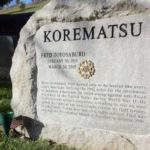This lesson explores the Supreme Court case Tandon v. Newsom (2021) regarding religious liberty.Throughout the COVID-19 pandemic, the state government of California along with many of its county governments placed restrictions on gatherings of people. One of their regulations had the effect of preventing more than three households gathering together at a time for any in-home prayer and Bible studies. Plaintiffs sued the state, arguing that these restrictions violated the First Amendment since many secular businesses were allowed to have more than three households of people within it at any time, and that therefore religion was being specifically discriminated against. The Supreme Court recently released a per curiam (unsigned) decision concerning the constitutionality of these regulations.
First Amendment: Assembly and Petition
Students explore the founding era legacies of assembly and petition and how those legacies informed the creation of these often-overlooked aspects of the First Amendment. They will complete a close reading activity to compare and contrast ideas presented in the Interactive Constitution and describe the ways these rights have been interpreted by the Court and used by citizens at various points throughout U.S. history. They will evaluate the constitutionality of assembly and petition rights in the modern era through an in-class, civil dialogue addressing questions about time, place, and manner restrictions; counter-protests; protests on college campuses; and other relevant assembly and petition questions.
Equal Justice Under Law
In its first constitutional challenge to the equal protection clause of the Fourteenth Amendment, the U.S. Supreme Court decided to hear a case brought by a Chinese immigrant, not an American citizen. Yick Wo believed city ordinances had been unfairly applied to him, so he challenged their constitutionality under the equal protection clause, and took his case all the way to the Supreme Court.
Mini-Moot Courts Resource Bundle and Video
A moot court is a role-play of an appeals court or Supreme Court hearing. The court is asked to rule on a lower court’s decision. No witnesses are called, nor are the basic facts in a case disputed. Arguments are prepared and presented on a legal question (e.g., the constitutionality of a law or government action or the interpretation of a federal statute). Moot courts are an effective strategy for focusing student attention on underlying legal principles and concepts of justice.
U.S. v. Lopez (1995)
Did Congress have the power to pass the Gun Free School Zones Act? After a 12th-grade student was arrested under the act, he and his lawyers challenged the constitutionality of the law.
Korematsu and Civil Liberties

This documentary explores the landmark case Korematsu v. U.S. (1944) concerning the constitutionality of presidential executive order 9066 during World War II that gave the U.S. military the power to ban thousands of American citizens of Japanese ancestry from areas considered important to national security. A PDF lesson plan accompanies this video.